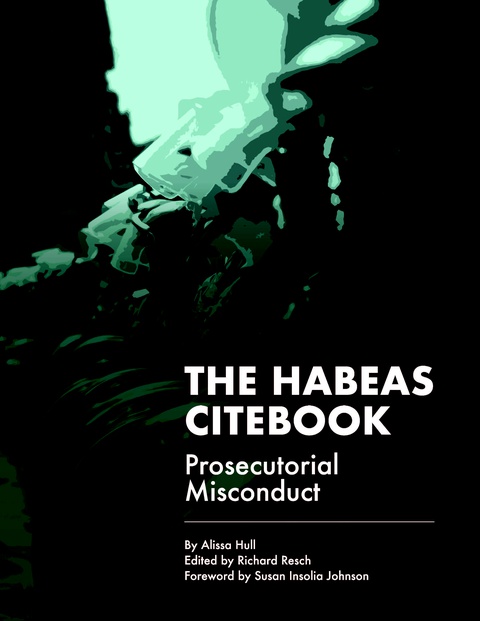Fifth Circuit Announces When Initial § 2255 Petition Not Decided on Merits and Appeals Court Later Recalls Mandate Dismissing Direct Appeal and Affirms Conviction, Subsequent § 2255 Petition Not ‘Second or Successive’ Under AEDPA
In a case of first impression, the United States Court of Appeals for the Fifth Circuit held that, where a defendant’s 28 U.S.C. § 2255 petition was not decided on the merits and the Court afterward recalled the mandate dismissing the direct appeal and affirmed the conviction, a subsequent § 2255 petition is not “second or successive” under the Antiterrorism and Effective Death Penalty Act of 1996 (“AEDPA”).
Procedural History
The Court described the facts of the case as constituting a “unique procedural history.” Rasheed Ali Muhammad was convicted, and he timely appealed. His initial direct appeal was dismissed for want of prosecution. He subsequently filed a § 2255 habeas petition, which the U.S. District Court for the Southern District of Mississippi denied as untimely. The Fifth Circuit thereafter granted his motion to recall the mandate in his direct appeal, permitting the Fifth Circuit to reassert jurisdiction and consider the merits of his direct appeal. The Fifth Circuit then affirmed his conviction. The Supreme Court denied certiorari in August 2022.
Muhammad then filed another § 2255 habeas corpus petition in the District Court. The District Court concluded that the petition was a “second or successive” habeas petition under the AEDPA and ordered it transferred to the Fifth Circuit pursuant to § 2255(h). The clerk of the Fifth Circuit refused to file it because Muhammad failed to comply with the procedural requirements for filing a second or successive petition. He timely appealed the District Court’s order construing his § 2255 habeas corpus petition as second or successive.
Analysis
The Court framed the legal question as follows: “If a prisoner’s 28 U.S.C. § 2255 habeas petition is initially dismissed as too late, but, after that, we recall the mandate in the preceding direct appeal and affirm the conviction, and then the prisoner files another § 2255 habeas corpus petition, is that later habeas petition a ‘second or successive’ habeas which requires an order granting it from the appellate court?”
The Court observed that “[u]nder AEDPA, prisoners must obtain permission from the court of appeals before filing a ‘second or successive’ section 2255 habeas corpus petition in district court.” § 2255(h). It stated that the term “second or successive” is a term of art because subsequent petitions are not always second or successive. Magwood v. Patterson, 561 U.S. 320 (2010). Usually, a habeas corpus petition is second or successive “where a defendant is convicted, the conviction is affirmed on direct appeal, then the defendant brings a § 2255 habeas corpus petition that is adjudged on the merits, and then files a second habeas corpus petition.” Johnson v. United States, 196 F.3d 802 (7th Cir. 1999).
However, courts typically treat later-in-time § 2255 petitions differently based on whether the initial petition was adjudicated on the merits or denied based on “technical procedural reasons.” Stewart v. Martinez-Villareal, 523 U.S. 637 (1998); see Graham v. Johnson, 168 F.3d 762 (5th Cir. 1999). Procedural denials are usually the result of failure to exhaust state remedies or premature filing, according to the Court. Steward; Slack v. McDaniel, 529 U.S. 473 (2000). The Court explained that the purpose of this framework is to ensure that a prisoner is allowed only one true collateral attack on his conviction. See O’Connor v. United States, 133 F.3d 548 (7th Cir. 1998) (“The idea behind [the successive motion provision] is that a prisoner is entitled to one, but only one, full and fair opportunity to wage a collateral attack.”).
The Court noted that the Fifth Circuit treats habeas petitions that have been denied due to being time-barred as an initial petition for purposes of determining whether a subsequent petition is “second or successive.” See, e.g., In re Flowers, 595 F.3d 204 (5th Cir. 2009) (per curiam). But the Court explained that “those decisions involved the scenario that a habeas corpus petition could never be timely and nothing came in between.” See Villanueva v. United States, 346 F.3d 55 (2d Cir. 2003). (“[T]he dismissal of a § 2255 petition as untimely under AEDPA presents a ‘permanent and incurable’ bar to federal review of the merits of the claim. The bar is permanent because, unlike cases where a habeas or § 2255 petition is dismissed without prejudice for failure to exhaust or as premature, a time-bar cannot be corrected”).
However, the Court stated that the current case is not like the foregoing typical cases for two reasons: “the initial § 2255 habeas corpus petition was not adjudicated on the merits, and we granted Muhammad’s motion to recall the mandate in his direct appeal after the denial of the time-barred habeas corpus petition.” Unlike typical cases, “here the clock reset after the denial of the untimely habeas corpus petition when we reinstated the direct appeal and addressed it on the merits in full, ultimately affirming the conviction,” the Court explained. It compared the current situation with Clay v. United States, 537 U.S. 522 (2003), in which the Supreme Court explained that the triggering date for the statute of limitations is “when the time expires for filing a petition for certiorari contesting the appellate court’s affirmance of the conviction.” The Court concluded that the denial of Muhammad’s untimely petition “reset the clock” and that “the untimely petition can be corrected.”
Thus, the Court ruled: “when a prisoner’s § 2255 habeas corpus petition is not adjudicated on the merits, then we recall the mandate in the direct appeal and affirm the conviction, a later § 2255 habeas corpus petition is not ‘second or successive.’ Thus, we conclude that the district court erred in determining that the § 2255 habeas corpus petition in question was ‘second or successive.’”
Conclusion
Accordingly, the Court reversed the order of the District Court and remanded for further proceedings. See: United States v. Muhammad, 124 F.4th 955 (5th Cir. 2025).
As a digital subscriber to Criminal Legal News, you can access full text and downloads for this and other premium content.
Already a subscriber? Login
Related legal case
United States v. Muhammad
| Year | 2025 |
|---|---|
| Cite | 124 F.4th 955 (5th Cir. 2025) |
| Level | Court of Appeals |
| Appeals Court Edition | F.4th |





